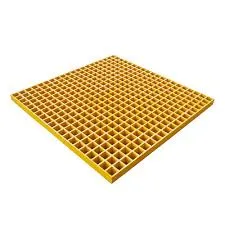
-
 Afrikaans
Afrikaans -
 Albanian
Albanian -
 Amharic
Amharic -
 Arabic
Arabic -
 Armenian
Armenian -
 Azerbaijani
Azerbaijani -
 Basque
Basque -
 Belarusian
Belarusian -
 Bengali
Bengali -
 Bosnian
Bosnian -
 Bulgarian
Bulgarian -
 Catalan
Catalan -
 Cebuano
Cebuano -
 China
China -
 China (Taiwan)
China (Taiwan) -
 Corsican
Corsican -
 Croatian
Croatian -
 Czech
Czech -
 Danish
Danish -
 Dutch
Dutch -
 English
English -
 Esperanto
Esperanto -
 Estonian
Estonian -
 Finnish
Finnish -
 French
French -
 Frisian
Frisian -
 Galician
Galician -
 Georgian
Georgian -
 German
German -
 Greek
Greek -
 Gujarati
Gujarati -
 Haitian Creole
Haitian Creole -
 hausa
hausa -
 hawaiian
hawaiian -
 Hebrew
Hebrew -
 Hindi
Hindi -
 Miao
Miao -
 Hungarian
Hungarian -
 Icelandic
Icelandic -
 igbo
igbo -
 Indonesian
Indonesian -
 irish
irish -
 Italian
Italian -
 Japanese
Japanese -
 Javanese
Javanese -
 Kannada
Kannada -
 kazakh
kazakh -
 Khmer
Khmer -
 Rwandese
Rwandese -
 Korean
Korean -
 Kurdish
Kurdish -
 Kyrgyz
Kyrgyz -
 Lao
Lao -
 Latin
Latin -
 Latvian
Latvian -
 Lithuanian
Lithuanian -
 Luxembourgish
Luxembourgish -
 Macedonian
Macedonian -
 Malgashi
Malgashi -
 Malay
Malay -
 Malayalam
Malayalam -
 Maltese
Maltese -
 Maori
Maori -
 Marathi
Marathi -
 Mongolian
Mongolian -
 Myanmar
Myanmar -
 Nepali
Nepali -
 Norwegian
Norwegian -
 Norwegian
Norwegian -
 Occitan
Occitan -
 Pashto
Pashto -
 Persian
Persian -
 Polish
Polish -
 Portuguese
Portuguese -
 Punjabi
Punjabi -
 Romanian
Romanian -
 Russian
Russian -
 Samoan
Samoan -
 Scottish Gaelic
Scottish Gaelic -
 Serbian
Serbian -
 Sesotho
Sesotho -
 Shona
Shona -
 Sindhi
Sindhi -
 Sinhala
Sinhala -
 Slovak
Slovak -
 Slovenian
Slovenian -
 Somali
Somali -
 Spanish
Spanish -
 Sundanese
Sundanese -
 Swahili
Swahili -
 Swedish
Swedish -
 Tagalog
Tagalog -
 Tajik
Tajik -
 Tamil
Tamil -
 Tatar
Tatar -
 Telugu
Telugu -
 Thai
Thai -
 Turkish
Turkish -
 Turkmen
Turkmen -
 Ukrainian
Ukrainian -
 Urdu
Urdu -
 Uighur
Uighur -
 Uzbek
Uzbek -
 Vietnamese
Vietnamese -
 Welsh
Welsh -
 Bantu
Bantu -
 Yiddish
Yiddish -
 Yoruba
Yoruba -
 Zulu
Zulu
Sustainable Solutions for Air Quality Improvement Using Advanced Scrubbing Technologies
Understanding GRP Scrubbers A Crucial Component in Maritime Emissions Control
As environmental concerns continue to rise globally, the maritime industry is under intense scrutiny for its significant contribution to air pollution. Vessel emissions primarily consist of sulfur oxides (SOx), nitrogen oxides (NOx), carbon monoxide (CO), and particulate matter (PM), contributing to the degradation of air quality. In response to these environmental challenges, the International Maritime Organization (IMO) has implemented strict regulations concerning sulfur emissions from ships, primarily through MARPOL Annex VI. This is where GRP scrubbers come into play.
What is a GRP Scrubber?
A GRP (Glass Reinforced Plastic) scrubber is a device used in ships to remove harmful substances from exhaust gases, particularly sulfur oxides. These scrubbers utilize a water-based process that involves spraying seawater or a mixture of fresh and seawater into the exhaust stream, whereby the sulfur compounds are absorbed. The use of GRP materials for constructing scrubbers is of particular interest due to their lightweight, corrosion-resistant, and durable properties, making them suitable for marine applications where harsh conditions prevail.
How Do GRP Scrubbers Work?
The operation of a GRP scrubber can be understood in several fundamental steps
1. Exhaust Gas Inlet The exhaust gases from the engine enter the scrubber, where they are directed to interact with the scrubbing liquid.
2. Liquid Injection Seawater or a specially formulated scrubbing liquid is sprayed into the exhaust gas stream. The liquid is typically enriched with an alkaline substance, which enhances its ability to neutralize acidic gases.
3. Absorption Process As the exhaust gases move through the scrubber, sulfur oxides are absorbed by the scrubbing liquid. Chemical reactions occur, converting the sulfur compounds into harmless sulfates.
4. Clean Exhaust After the scrubbing process, the cleaned exhaust gases are released into the atmosphere, significantly reducing the vessel's sulfur emissions.
5. Waste Management The spent scrubbing liquid, which now contains the absorbed pollutants, must be treated and disposed of according to environmental regulations, ensuring that it does not harm marine ecosystems.
grp scrubber

Advantages of Using GRP Scrubbers
1. Compliance with Regulations Implementing GRP scrubbers allows ship operators to comply with stringent International Maritime Organization regulations, especially the 2020 sulfur cap of 0.5% on marine fuels.
2. Economic Efficiency Many shipowners find that the operational costs of using scrubbers, compared to switching to low-sulfur fuels, can be economically advantageous in the long run, particularly for vessels that operate in areas where fuel prices are high.
3. Environmental Benefits By effectively reducing sulfur oxides emissions, GRP scrubbers play a critical role in improving air quality and minimizing the maritime industry's impact on climate change.
4. Versatility GRP scrubbers can be tailored to meet specific needs, making them suitable for various types of vessels, from large container ships to smaller fishing boats.
Challenges in Deployment
Despite the many advantages, the adoption of GRP scrubbers comes with its challenges. Initial installation costs can be substantial, which may deter some operators. Moreover, the disposal of the waste generated during the scrubbing process requires careful management to comply with local regulations and protect marine life.
Another concern is the need for regular maintenance of the scrubber systems, as failure to maintain these systems can lead to inefficiencies and may even result in continued high emissions. Additionally, the reliability of seawater scrubbing in regions with low seawater availability poses another challenge for ship operators.
Conclusion
In conclusion, GRP scrubbers represent a transformative technology in the maritime industry's quest for sustainability. By enabling vessels to comply with increasingly stringent emissions regulations while maintaining operational efficiency, these scrubbers are pivotal in reducing the environmental footprint of shipping. As the industry continues to innovate and adapt, the effective integration of GRP scrubbers will be instrumental in safeguarding our oceans and air quality for future generations. The path towards greener shipping practices will undoubtedly continue to evolve, with GRP scrubbers at the forefront of this essential transition.









